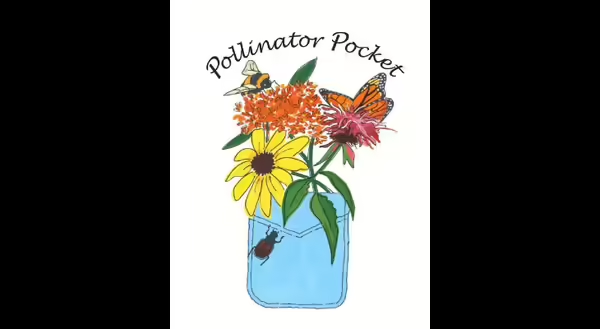
In recent decades, insect populations around the globe have been declining dramatically. A 2019 study assessed global insect populations and determined that 40% of all insect species are in decline and some may reach extinction in coming decades if populations are not stabilized. Among the causes for these sharp declines, all were human induced, with habitat conversion to human uses topping the list followed by use of synthetic pesticides and fertilizers, human spread of pathogens and invasive species, and climate change.
As this stark reality has hit the gardening world, there is a growing interested in designing garden spaces specifically to accommodate insect life. Pollinating insects are among the most important to human populations and native biodiversity as they facilitate the vital process of pollination, either to perpetuate native plant species or produce many of the crops we humans rely on for food at the global scale. Garden design for pollinators has been a growing area of interest, prompting a number of questions about how to best arrange plants that support our native pollinating insects.
The Pollinator Pockets program was created by the East Central Illinois Master Naturalists and University of Illinois Extension to help gardeners design spaces that are pollinator friendly. The program website contains useful garden designs that fit even the smallest space but can also be scaled up to larger planting arrangements or even near restoration-size plantings.
Pollinator Pocket designs aim to provide a season of blooms by integrating plants with staggered bloom times. This is especially important for pollinating insects so they have access to the nectar and pollen resources needed for food throughout the growing season.
But it’s not all about pretty blooms that attract adult insects for feeding. Insects use plants for other parts of their lifecycle, such their larval stages. In many cases, larvae have a specific species or group of species they use for feeding. Plant leaves, stems and other parts are important to these insect larvae as they develop into adults. Native plants provide the best resources to larvae, so the integration of more native plant species can really boost the value of your garden space.
The management practices we do throughout the growing season can also be designed to benefit pollinators. Many species overwinter in standing dead stems or leaf litter on the ground. So, it’s important to leave these key habitat elements in place over the winter time, save the garden cleanup for late spring, after insects emerge.
Pesticide use was cited as one of the major impacts to global insect populations. Reducing home pesticide use or planting natives that require less pest control can vastly improve the suitability of our landscape for pollinators. Carefully consider the use of pesticides, either in the vegetable garden or ornamental beds, prior to use. Many times, there are more selective pesticides available or cultural practices that can provide pest control while minimizing pesticide exposure of non-target insects, like pollinators.
If you are interested in planting a Pollinator Pocket or registering an existing garden in the program, more information can be found at http://go.illinoi.edu/Pocket. After submitting your application, Illinois Extension will mail you an official certificate and a Pollinator Pockets sign to display in your garden. The signs do wonders to educate neighbors and strike up the conversation about the importance of pollinators. In addition, you can choose to be included in our Pollinator Pockets map which shows all the habitat created here in Illinois and several surrounding states. Do your part today to support pollinators by adding, or improving, a Pollinator Pocket on your property.